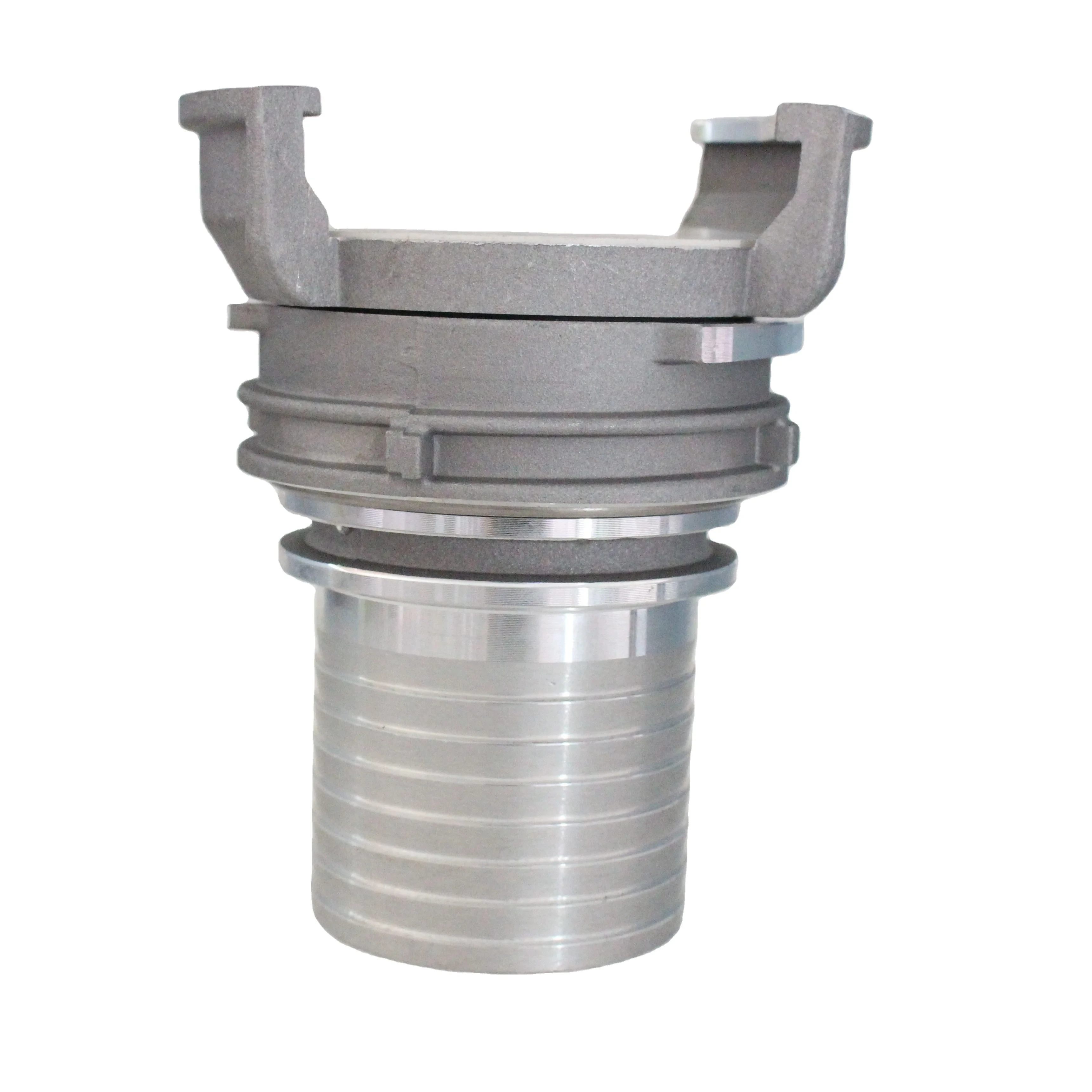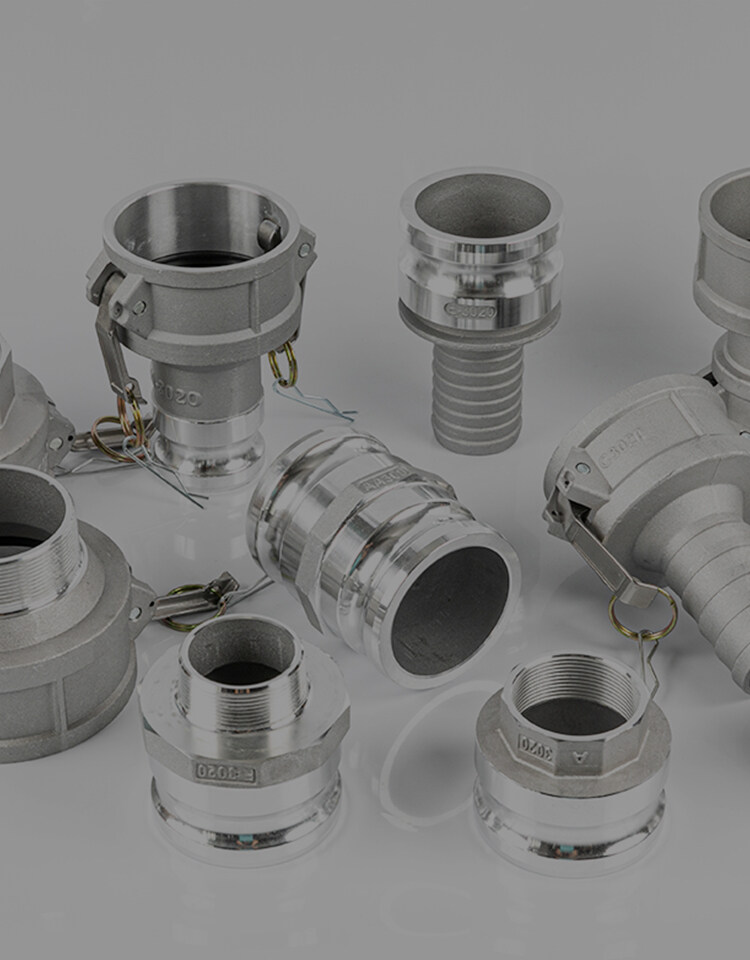Error de formato de correo electrónico
emailCannotEmpty
emailDoesExist
pwdLetterLimtTip
inconsistentPwd
pwdLetterLimtTip
inconsistentPwd

Noticias
Aquí, puedes describir un texto que quieres expresar

The Comprehensive Guide to Guillemin Reducing Couplers
The Guillemin reducing coupler emerges as a critical component in the dynamic and demanding field of industrial fluid transfer, bridging the gap between hoses of varying diameters with unparalleled efficiency. This comprehensive guide delves into the world of Guillemin reducing couplers, shedding light on their design, functionality, and the seamless integration with other Guillemin fittings such as the female Guillemin connector and the male with latch French style coupling. Whether you’re a seasoned professional or new to the industry, this guide will equip you with the knowledge to understand, utilize, and maintain Guillemin reducing couplers effectively.
Understanding Guillemin Reducing Couplers:
The Guillemin reducing coupler is ingeniously crafted to facilitate the connection of hoses or pipes with different diameters, ensuring a smooth and secure transition for the flow of liquids or gases. This versatility is essential in a multitude of settings, from firefighting to chemical manufacturing, where the rapid and reliable transfer of fluids is a non-negotiable necessity.
Key Features of Guillemin Reducing Couplers:
They are renowned for their robust construction and user-friendly design. Here are some of their standout features:
Versatility: They enable the connection of hoses with different diameters, which is crucial when dealing with varying flow rates and hose sizes.
Quick and Secure Locking Mechanism: The couplers are equipped with a symmetrical locking system, allowing for quick and easy connections that are also secure and reliable.
Compatibility: The reducing couplers are designed to work seamlessly with standard Guillemin fittings, ensuring a wide range of applications.
Durability: Made from materials such as aluminum, stainless steel, or polypropylene, these couplers can withstand harsh environments and resist corrosion.
The Role of Female Guillemin Connectors:
The female Guillemin connector is an integral part of the coupling system. It features a symmetrical shape with a locking ring that, when twisted, securely fastens to its male counterpart. This connection is not only leak-proof but also capable of withstanding significant pressure, making it ideal for high-demand applications.
Male with Latch French Style Coupling:
The male with latch French style coupling adds an extra layer of security to the Guillemin coupling system. The latch mechanism ensures that once the male and female connectors are joined, they remain locked until manually released. This feature is particularly beneficial in situations where hoses might be subjected to movement or pressure changes, which could otherwise lead to accidental disconnections.
Integration with Coupling Guillemin Fittings:
The beauty of the Guillemin reducing coupler lies in its ability to integrate with a variety of Guillemin fittings. This modular approach allows for the construction of fluid transfer systems that are both flexible and robust. Whether you’re assembling a new system or modifying an existing one, the compatibility of these couplings ensures that changes can be made quickly and without hassle.
Applications of Guillemin Reducing Couplers:
Firefighting: In emergency situations, firefighters rely on quick and reliable hose connections to combat fires effectively. They enable them to connect hoses of different sizes rapidly, ensuring a steady and powerful water flow.
Agriculture: For irrigation systems that require the distribution of water across various field sizes, reducing couplers are essential. They allow farmers to adapt their hoses to the specific needs of each crop, optimizing water usage.
Chemical Processing: The safe transfer of chemicals is critical. They provide a secure connection that minimizes the risk of leaks and exposure to hazardous substances.
Oil and Gas: In the transfer of fuels and other petroleum products, reducing couplers ensure that connections between hoses and storage tanks are secure, preventing spills and facilitating efficient fuel transfer.
Maintenance and Care for Guillemin Reducing Couplers:
Proper maintenance and care are essential for ensuring the longevity and reliability. These components are often exposed to harsh conditions, including extreme temperatures, corrosive substances, and mechanical stress, which can affect their performance over time. To maintain their functionality and safety, it is crucial to follow a comprehensive maintenance routine.
Routine Inspection:
Regular inspections are the first line of defense in maintenance. During these inspections, look for signs of wear, corrosion, or damage to the coupler’s body, locking mechanism, and seals. Any deformities or cracks could compromise the integrity of the connection, leading to potential leaks or failures.
Cleaning Procedures:
After each use, it is advisable to clean the couplers thoroughly to remove any residues or contaminants that may have accumulated. Use appropriate cleaning agents that are compatible with the coupler’s material to avoid causing damage. For example, aluminum couplers should not be cleaned with caustic substances that could induce corrosion.
Seal and Gasket Replacement:
The seals and gaskets within the couplers are critical for preventing leaks. Over time, these can become worn or brittle, especially if exposed to chemicals or temperature fluctuations. Check the condition of the seals regularly and replace them as needed to ensure a tight and secure connection.
Lubrication:
The moving parts of the coupler, such as the locking ring and latch mechanism, should be lubricated periodically to ensure smooth operation. Use a suitable lubricant that will not degrade the coupler’s material or contaminate the fluid being transferred.
Correct Usage:
Always use the Guillemin reducing coupler as intended. Avoid applying excessive force when connecting or disconnecting the coupler, as this can damage the locking mechanism or the coupler itself. Ensure that the coupler is compatible with the fluids being transferred and that it is operating within its pressure and temperature ratings.
Storage:
When not in use, store the couplers in a clean, dry environment away from direct sunlight and extreme temperatures. Proper storage prevents premature aging of the materials and protects the couplers from environmental damage.
Replacement of Worn Components:
In addition to seals and gaskets, other components of the coupler, such as the locking ring or latch, may also wear out over time. Inspect these parts during routine maintenance and replace them if they show signs of wear or if they no longer function as intended.
Professional Inspection:
In some cases, it may be beneficial to have the couplers inspected by a professional, especially if they are used in critical applications where failure could have severe consequences. A professional can provide a more detailed inspection and identify issues that may not be apparent during routine checks.
Troubleshooting Common Issues:
Even with diligent maintenance, they can encounter issues that affect their performance. Being able to quickly identify and troubleshoot common problems is essential to maintaining a safe and efficient operation. Below are some typical issues that may arise with Guillemin reducing couplers and the steps to resolve them.
Leakage at the Connection:
Leaks are one of the most common issues with any coupling system. If a Guillemin reducing coupler is leaking, first check the condition of the seals and gaskets. Worn or damaged seals should be replaced immediately. Also, ensure that the coupler is correctly aligned and fully engaged before locking it into place. Sometimes, debris caught between the coupler and the connector can prevent a proper seal, so cleaning the connecting surfaces may resolve the issue.
Difficulty in Coupling or Uncoupling:
If you’re having trouble connecting or disconnecting the coupler, it could be due to misalignment or a faulty latch mechanism. Ensure that the coupler and connector are properly aligned before attempting to connect them. If the latch mechanism is not engaging or releasing smoothly, it may need cleaning or lubrication. In some cases, the latch or locking ring may be damaged and require replacement.
Wear of the Locking Mechanism:
The locking mechanism is subject to wear over time, especially if the coupler is frequently connected and disconnected. Inspect the locking ring and latch for signs of wear. If the components are worn, they may not hold the connection securely, which can be dangerous. Replace any worn parts to ensure the coupler functions correctly.
Corrosion and Material Degradation:
The couplers can be made from various materials, including aluminum, stainless steel, and polypropylene. Each material has its own resistance to corrosion and chemical degradation. If you notice signs of corrosion, consider whether the coupler material is appropriate for the substances being transferred. In some cases, switching to a coupler made from a more resistant material may be necessary.
Pressure-Related Issues:
The couplers are rated for specific pressure ranges. If the coupler is subjected to pressures beyond its rating, it can fail. Always check that the pressure within the system does not exceed the coupler’s maximum pressure rating. If over-pressurization is a recurring problem, you may need to install a pressure relief valve or choose a coupler rated for higher pressures.
Incompatibility with Fluids:
Using a coupler with fluids it’s not designed for can lead to degradation and failure. Always verify that the coupler material is compatible with the fluids being transferred. If the coupler is degrading, it may be due to chemical incompatibility, and you’ll need to select a coupler made from a suitable material.
Handling and Storage Issues:
Improper handling and storage can lead to mechanical damage. Avoid dropping or striking the couplers, and store them in a manner that prevents them from being crushed or bent. If a coupler has been mishandled and is visibly damaged, it should be taken out of service and replaced.
Safety Considerations:
When working with Guillemin reducing couplers, safety is of paramount importance. These devices are used in various industries, often under high pressure and with potentially hazardous materials. To ensure the safety of all personnel and the integrity of the fluid transfer system, several safety considerations must be taken into account.
Understanding Pressure Ratings:
Each Guillemin reducing coupler is designed to withstand a specific range of pressures. It is crucial to understand the maximum pressure rating of the coupler and to ensure that the system’s pressure does not exceed this limit. Over-pressurization can lead to coupler failure, which may result in injury or damage to the system.
Material Compatibility:
The materials used in the construction must be compatible with the fluids they are intended to transfer. Using a coupler with incompatible fluids can lead to chemical reactions, degradation of the coupler material, and potential leaks or spills. Always check the compatibility of the coupler material with the fluids in your system.
Proper Handling Techniques:
Correct handling is essential to prevent accidental disconnections or damage to the coupler. Ensure that all personnel are trained in the proper techniques for connecting and disconnecting the couplers, including the correct use of locking mechanisms and latches.
Use of Personal Protective Equipment (PPE):
Depending on the fluids being transferred, appropriate PPE should be worn to protect against spills, splashes, or exposure to harmful substances. This may include gloves, goggles, face shields, and protective clothing.
Regular Maintenance and Inspections:
Regular maintenance and inspections are vital to identify potential issues before they lead to accidents. This includes checking for wear and tear, ensuring seals and gaskets are in good condition, and verifying that locking mechanisms are functioning correctly.
Avoiding Mechanical Stress:
The couplers should not be subjected to undue mechanical stress, such as twisting, pulling, or crushing forces. Such stress can compromise the coupler’s integrity and lead to failures. Ensure that hoses are properly supported and that there is sufficient slack to prevent tension on the couplers.
Pressure Testing:
After assembling a system with Guillemin reducing couplers, it is advisable to perform a pressure test to verify the integrity of the connections. This test should be conducted at a safe pressure level, as specified by the manufacturer, to ensure that there are no leaks or weak points in the system.
Emergency Response Plan:
Have an emergency response plan in place in case of a failure or accident involving the couplers. This plan should include steps for containing spills, evacuating the area if necessary, and administering first aid.
Conclusion:
The Guillemin reducing coupler is an indispensable tool in the arsenal of fluid transfer equipment. Its ability to adapt to different hose sizes, combined with its compatibility with a range of Guillemin fittings, makes it a versatile and reliable choice for a variety of industries. With a deep understanding of its features, applications, and maintenance, users can ensure a fluid transfer system that is both safe and efficient, standing the test of time and the rigors of industrial use.

